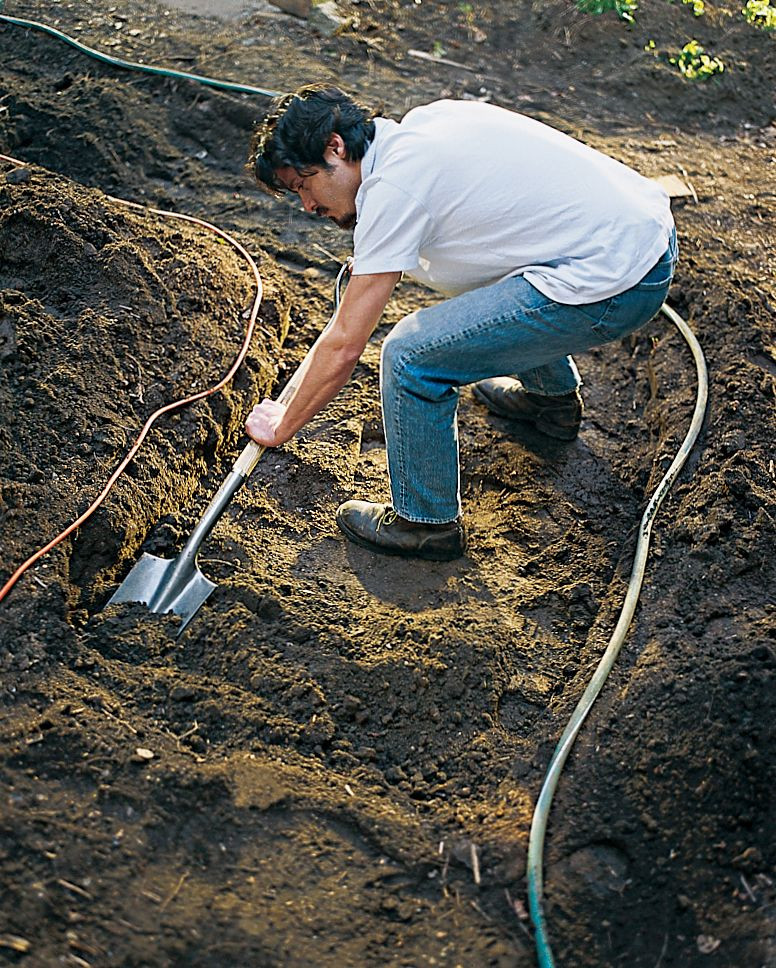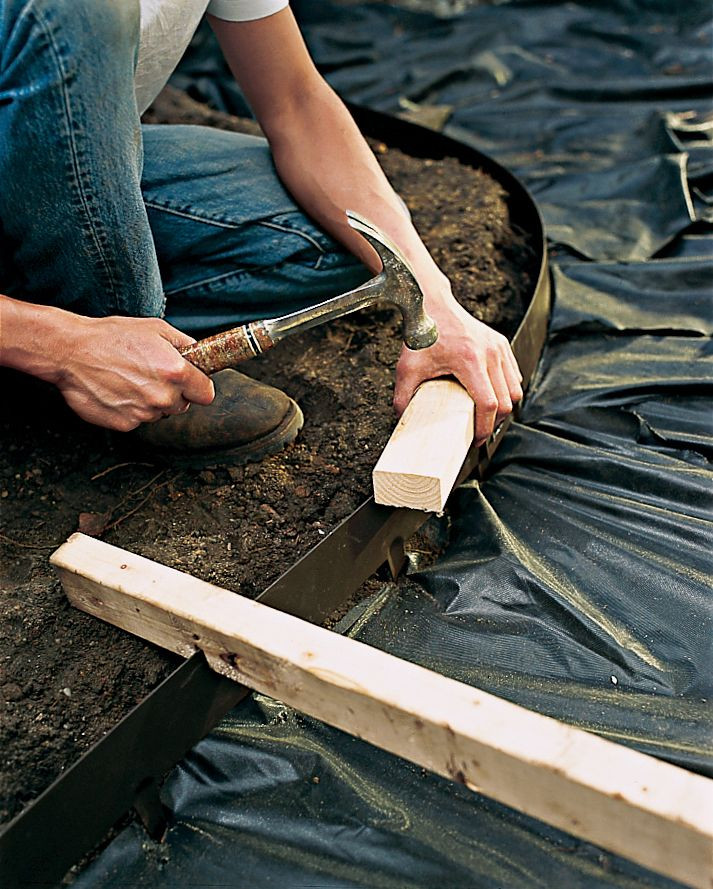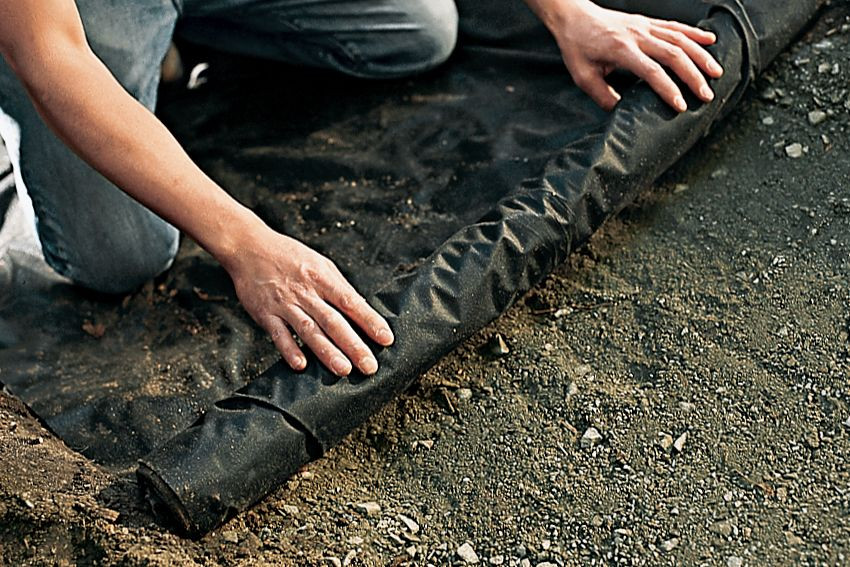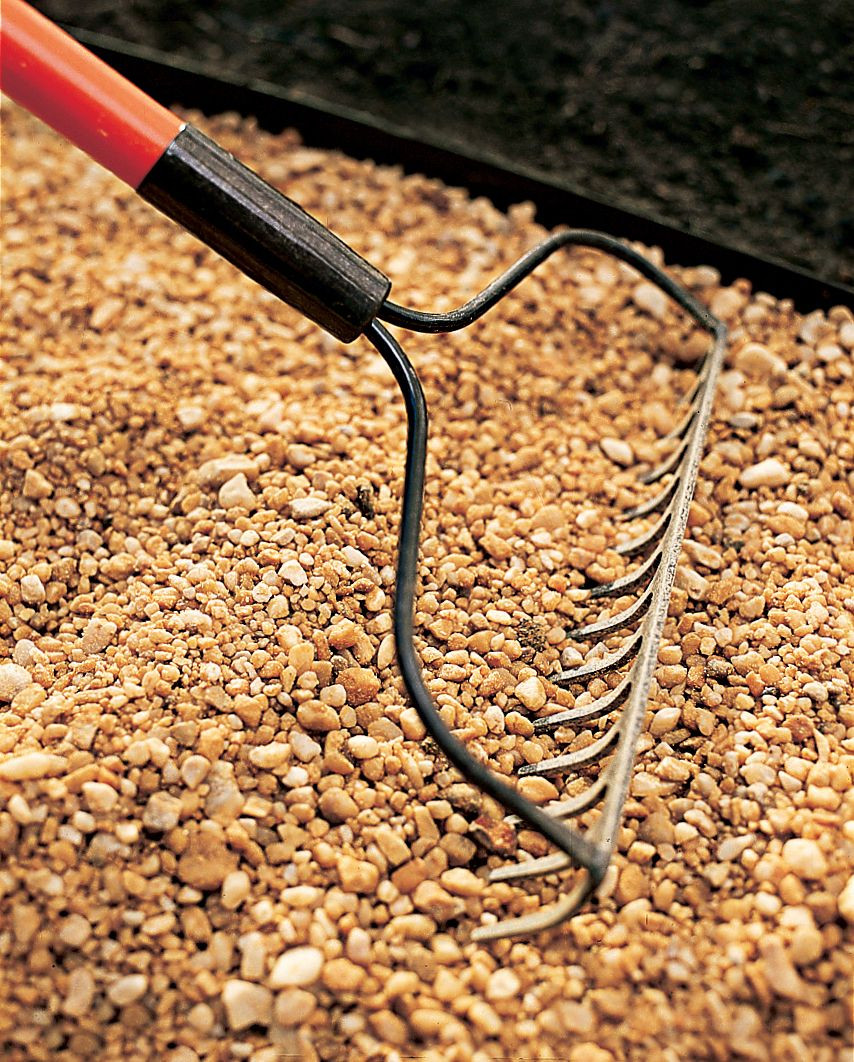Crushed rock landscaping enhances your outdoor space, offering a durable and aesthetically pleasing solution. At rockscapes.net, we guide you through the process, ensuring a beautiful and long-lasting landscape.
Crushed rock landscaping is an increasingly popular choice for homeowners seeking a low-maintenance, aesthetically pleasing, and eco-friendly alternative to traditional lawns and gardens. This method involves using various types of crushed rock to create stunning landscapes that require minimal upkeep and offer excellent drainage. Whether you’re looking to build a serene rock garden, a functional pathway, or a drought-resistant yard, crushed rock provides a versatile and cost-effective solution. Rockscapes.net is your ultimate resource for discovering the myriad possibilities of crushed rock landscaping. We will explore how to expertly install crushed rock landscaping that not only enhances the beauty of your property but also adds value and functionality. By the end of this guide, you’ll understand the step-by-step process, from planning and preparation to installation and maintenance, ensuring a successful and visually appealing outcome. Learn how to use decorative stones, gravel mulch, and drainage rock effectively.
Table of Contents
- What is Crushed Rock Landscaping and Why Choose It?
- Planning Your Crushed Rock Landscape: Design and Layout
- Essential Tools and Materials for Crushed Rock Installation
- Step-by-Step Guide: How To Install Crushed Rock Landscaping
- Selecting the Right Type of Crushed Rock for Your Landscape
- Enhancing Your Crushed Rock Landscape with Plants and Features
- Maintaining Your Crushed Rock Landscape: Tips and Best Practices
- Common Mistakes to Avoid When Installing Crushed Rock
- Cost-Effective Strategies for Crushed Rock Landscaping
- Frequently Asked Questions (FAQs) About Crushed Rock Landscaping
1. What is Crushed Rock Landscaping and Why Choose It?
Crushed rock landscaping involves using various types of crushed stone, gravel, and other aggregates to create visually appealing and functional outdoor spaces. But why should you consider it?
Crushed rock landscaping transforms your outdoor space into a low-maintenance, visually stunning area. According to the U.S. Environmental Protection Agency (EPA), drought-resistant landscaping can significantly reduce water consumption, and crushed rock is a perfect solution. Crushed rock landscaping involves using a variety of crushed stones, gravel, and aggregates to design and construct outdoor environments. It is a versatile approach that offers numerous benefits, making it an increasingly popular choice for homeowners and landscape designers alike.
Here’s why you should consider crushed rock landscaping:
- Low Maintenance: Requires minimal watering, mowing, or fertilizing.
- Durability: Crushed rock is resilient and withstands harsh weather conditions.
- Eco-Friendly: Reduces water consumption and can be made from recycled materials.
- Aesthetic Appeal: Offers a variety of colors, textures, and sizes to suit any style.
- Excellent Drainage: Prevents waterlogging and erosion.
Choosing crushed rock landscaping is opting for a sustainable and beautiful way to enhance your property.
2. Planning Your Crushed Rock Landscape: Design and Layout
How do you start planning your crushed rock landscape to ensure it meets your needs and aesthetic preferences?
Planning your crushed rock landscape involves assessing your site, determining your goals, and creating a design that complements your home and lifestyle. Rockscapes.net provides expert advice to help you make informed decisions. Proper planning ensures your crushed rock landscape is not only visually appealing but also functional and sustainable.
Here are the key steps in planning your crushed rock landscape:
- Assess Your Site: Evaluate the soil type, drainage, sun exposure, and existing vegetation.
- Define Your Goals: Determine the primary purpose of your landscape (e.g., erosion control, pathway, garden).
- Create a Design: Sketch a layout that includes pathways, planting areas, and decorative features.
- Consider Drainage: Plan for proper water runoff to prevent pooling and erosion.
- Choose Materials: Select the right type, size, and color of crushed rock based on your design and budget.
Well-thought-out planning guarantees that your crushed rock landscape is both beautiful and practical.
3. Essential Tools and Materials for Crushed Rock Installation
What tools and materials are necessary for a successful crushed rock installation?
A successful crushed rock installation requires the right tools and materials. These ensure efficiency, precision, and durability in your landscaping project. At Rockscapes.net, we provide a comprehensive list to get you started. Having the correct tools and high-quality materials will streamline the installation process and ensure a long-lasting, visually appealing landscape.
Here is a list of essential tools and materials:
| Tools | Materials |
|---|---|
| Shovels | Crushed Rock (various types and sizes) |
| Rakes | Landscape Fabric |
| Wheelbarrow | Edging Materials (plastic, metal, wood, etc.) |
| Tampers | Sand or Gravel Base |
| Measuring Tape | Weed Barrier |
| Level | Stakes and String |
| Safety Glasses and Gloves |
Using the right tools and materials ensures a smooth and professional crushed rock installation.
4. Step-by-Step Guide: How to Install Crushed Rock Landscaping
How do you install crushed rock landscaping to achieve professional-looking results?
Installing crushed rock landscaping involves several steps, from site preparation to the final touches. Rockscapes.net offers a detailed guide to ensure a successful project. Following these steps carefully will help you create a beautiful and durable landscape that enhances your property’s value and appeal.
Here is a step-by-step guide to installing crushed rock landscaping:
Step 1: Prepare the Site
 Preparing the ground for crushed rock with a shovel
Preparing the ground for crushed rock with a shovel
Clear the area of existing vegetation, rocks, and debris. Grade the soil to ensure proper drainage, and compact the soil using a hand tamper. Start by marking the area where you plan to install the crushed rock. Use a garden hose, rope, or spray paint to outline the desired shape. If you’re removing grass or weeds, use a shovel to strip away the top layer of sod. Aim for a depth of about 2-4 inches, depending on the existing vegetation and the planned thickness of your crushed rock layer.
Step 2: Install Edging
 Installing edging for gravel path
Installing edging for gravel path
Install edging materials (plastic, metal, or wood) to contain the crushed rock and provide a defined border. Secure the edging with stakes, ensuring it is level and stable. Select an edging material that complements your landscape design and effectively contains the crushed rock. Common options include plastic, metal, wood, and stone. Dig a shallow trench along the perimeter of your marked area to accommodate the edging.
Step 3: Lay Landscape Fabric
 Laying down the landscape fabric
Laying down the landscape fabric
Cover the prepared area with landscape fabric to prevent weed growth. Overlap the edges of the fabric to ensure complete coverage. Secure the fabric with landscape staples or pins.
Step 4: Add a Base Layer (Optional)
For added stability and drainage, add a layer of sand or gravel base. Spread the base material evenly and compact it with a hand tamper. For pathways or areas with heavy foot traffic, consider adding a base layer of compacted gravel. This will provide a stable foundation and improve drainage, preventing the crushed rock from shifting or sinking over time.
Step 5: Spread the Crushed Rock
 Raking the gravel into the path
Raking the gravel into the path
Pour the crushed rock evenly over the landscape fabric, using a shovel and rake to spread it to the desired thickness (typically 2-4 inches). Ensure a uniform appearance by smoothing the surface. Pour the crushed rock onto the landscape fabric, starting from one corner and working your way across the area. Use a shovel to distribute the rock evenly, and then use a rake to smooth the surface. Aim for a consistent depth of 2-4 inches, depending on the size of the rock and the intended use of the area.
Step 6: Final Touches
Water the crushed rock lightly to help it settle. Add decorative elements such as larger rocks, plants, or garden art to enhance the aesthetic appeal. Check for any areas that need additional rock and adjust as necessary.
Following these steps carefully will result in a professionally installed crushed rock landscape.
5. Selecting the Right Type of Crushed Rock for Your Landscape
Which types of crushed rock are best for different landscaping purposes?
Selecting the right type of crushed rock is crucial for achieving the desired look and functionality in your landscape. Rockscapes.net offers a wide variety of options to suit any project. The choice of crushed rock can significantly impact the aesthetic appeal, drainage, and overall performance of your landscape.
Here is a comparison of different types of crushed rock:
| Type of Rock | Description | Best Uses |
|---|---|---|
| Pea Gravel | Small, round stones with a smooth texture. | Pathways, playgrounds, and decorative ground cover. |
| Crushed Stone | Angular, irregularly shaped stones. | Driveways, base layers for patios, and erosion control. |
| Lava Rock | Lightweight, porous rock with a reddish-brown color. | Mulch, drainage, and decorative accents. |
| Decomposed Granite | Fine-grained, crushed granite with a natural look. | Pathways, patios, and xeriscaping. |
| River Rock | Smooth, rounded stones in various sizes and colors. | Garden beds, water features, and erosion control. |
| Quarry Spalls | Large angular rocks, adds a natural unique look. | Retaining walls, dry creek beds, and decorative landscaping features. |
Choosing the right type of crushed rock ensures the success and longevity of your landscape.
6. Enhancing Your Crushed Rock Landscape with Plants and Features
How can you enhance your crushed rock landscape with plants and other features?
Enhancing your crushed rock landscape with plants and features can transform it into a vibrant and inviting outdoor space. Rockscapes.net provides inspiration and guidance for creating a stunning landscape. Integrating plants and decorative elements can add color, texture, and visual interest, making your crushed rock landscape a true masterpiece.
Here are some ideas for enhancing your landscape:
- Choose Drought-Tolerant Plants: Select plants that thrive in dry conditions and require minimal watering.
- Create Planting Pockets: Use soil-filled pockets within the crushed rock to support plant growth.
- Add Decorative Boulders: Incorporate large rocks to create focal points and add visual interest.
- Install Water Features: Add a small fountain or pond to create a relaxing and inviting atmosphere.
- Use Lighting: Install landscape lighting to highlight features and provide safety at night.
Incorporating these elements will enhance the beauty and functionality of your crushed rock landscape.
7. Maintaining Your Crushed Rock Landscape: Tips and Best Practices
What are the best practices for maintaining your crushed rock landscape?
Maintaining your crushed rock landscape ensures it remains beautiful and functional for years to come. Rockscapes.net offers valuable tips and best practices for effective maintenance. Regular maintenance will prevent weed growth, maintain proper drainage, and keep your landscape looking its best.
Here are some maintenance tips and best practices:
- Weed Control: Regularly remove weeds by hand or use a weed killer.
- Raking: Rake the crushed rock periodically to redistribute it and maintain a uniform surface.
- Top-dressing: Add additional crushed rock as needed to maintain the desired depth.
- Drainage: Ensure proper drainage by clearing any clogged areas.
- Cleaning: Rinse the rocks with water to remove dirt and debris.
Regular maintenance will keep your crushed rock landscape looking beautiful and functional.
8. Common Mistakes to Avoid When Installing Crushed Rock
What are some common mistakes to avoid during crushed rock installation?
Avoiding common mistakes during crushed rock installation can save you time, money, and frustration. Rockscapes.net highlights potential pitfalls and how to avoid them. By being aware of these common errors, you can ensure a smooth and successful installation process.
Here are some common mistakes to avoid:
- Poor Site Preparation: Failing to properly clear and grade the site can lead to drainage issues and weed growth.
- Incorrect Material Selection: Choosing the wrong type or size of crushed rock can affect the landscape’s appearance and functionality.
- Inadequate Drainage: Neglecting to plan for proper drainage can result in water pooling and erosion.
- Skipping Landscape Fabric: Omitting landscape fabric allows weeds to grow through the crushed rock.
- Improper Edging: Installing edging incorrectly can cause the crushed rock to spill over into surrounding areas.
Avoiding these mistakes will ensure a successful and long-lasting crushed rock landscape.
9. Cost-Effective Strategies for Crushed Rock Landscaping
How can you save money on your crushed rock landscaping project?
Implementing cost-effective strategies can make crushed rock landscaping an affordable option. Rockscapes.net provides tips for saving money without compromising quality. By carefully planning and making smart choices, you can create a stunning landscape on a budget.
Here are some cost-effective strategies:
- DIY Installation: Install the crushed rock yourself to save on labor costs.
- Source Locally: Purchase crushed rock from local suppliers to reduce transportation costs.
- Use Recycled Materials: Consider using recycled crushed concrete or other recycled materials.
- Plan Carefully: Accurate planning helps avoid overspending on materials and labor.
- Compare Prices: Shop around and compare prices from multiple suppliers to find the best deals.
Using these strategies will help you create a beautiful crushed rock landscape without breaking the bank.
10. Frequently Asked Questions (FAQs) About Crushed Rock Landscaping
Do you have questions about crushed rock landscaping? We’ve compiled a list of frequently asked questions to help you understand this landscaping option better.
1. What is Crushed Rock Landscaping?
Crushed rock landscaping is the use of crushed stone, gravel, and other aggregates to create decorative and functional outdoor spaces, offering low maintenance and excellent drainage.
2. Why Choose Crushed Rock Over Traditional Landscaping?
Crushed rock requires less maintenance, reduces water consumption, and is more durable than traditional lawns, making it an eco-friendly and cost-effective option.
3. What Types of Crushed Rock Are Available?
Common types include pea gravel, crushed stone, lava rock, decomposed granite, and river rock, each offering different aesthetic and functional properties.
4. How Do I Prepare the Site for Crushed Rock Installation?
Clear the area of vegetation, grade the soil for proper drainage, and compact the soil. Install edging to contain the rock and lay landscape fabric to prevent weed growth.
5. What is the Best Way to Prevent Weeds in a Crushed Rock Landscape?
Use landscape fabric beneath the crushed rock and regularly remove any weeds that appear. Applying a pre-emergent herbicide can also help.
6. How Thick Should the Crushed Rock Layer Be?
Typically, a layer of 2-4 inches is sufficient for most applications. Thicker layers may be needed for driveways or areas with heavy traffic.
7. Can I Use Crushed Rock for Drainage?
Yes, crushed rock is excellent for drainage. Use it in French drains, around foundations, or in areas prone to waterlogging to improve water runoff.
8. How Do I Maintain a Crushed Rock Landscape?
Regularly rake the rocks to redistribute them, remove debris, and top-dress with additional rock as needed. Ensure proper drainage and control weeds.
9. How Much Does Crushed Rock Landscaping Cost?
Costs vary depending on the type of rock, the size of the area, and whether you hire a professional. DIY installation and sourcing local materials can help reduce costs.
10. Where Can I Find High-Quality Crushed Rock?
Visit rockscapes.net for a wide selection of high-quality crushed rock and expert advice to help you create the perfect landscape. Address: 1151 S Forest Ave, Tempe, AZ 85281, United States. Phone: +1 (480) 965-9011.
By addressing these common questions, you’ll be better prepared to tackle your crushed rock landscaping project with confidence.
Conclusion: Transform Your Landscape with Rockscapes.net
Ready to transform your outdoor space with beautiful and sustainable crushed rock landscaping? At Rockscapes.net, we offer a wealth of resources, from design inspiration to expert advice, to help you create the landscape of your dreams. Explore our website today and discover the endless possibilities of crushed rock landscaping. Contact us at Address: 1151 S Forest Ave, Tempe, AZ 85281, United States. Phone: +1 (480) 965-9011, or visit rockscapes.net to get started!